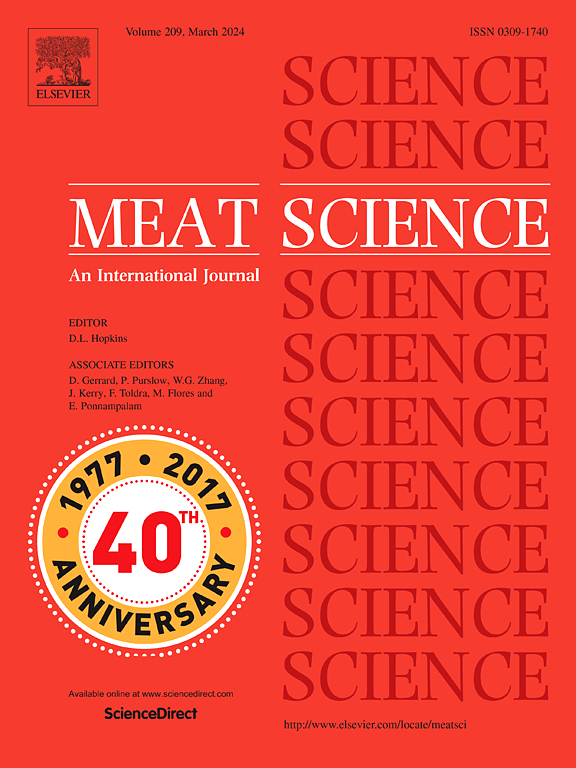构建澳大利亚羊肉食用质量预测模型。
IF 7.1
1区 农林科学
Q1 Agricultural and Biological Sciences
引用次数: 0
摘要
现行的澳大利亚羊肉标准(MSA)模型是一个旨在提高澳大利亚羊肉整体食用品质的路径系统,但它无法预测消费者对特定切肉的个人食用品质评分。本文介绍了使用消费者感官评分来创建与不同切肉的单个质量等级相关联的客观综合食用品质预测分数的方法。该方法考虑到了行业内正在商业化的客观胴体测量指标,如肌内脂肪百分比和瘦肉率百分比。该模型表明,通过利用这些胴体分级特征,可以对烧烤和烤肉烹饪方法的食用品质进行预测,准确率分别为 75% 和 72%,但消费者的个体差异仍然很大。该模型将使供应链能够根据食用品质的表现为不同的营销策略(品牌)分配肉块,同时也减少了向消费者提供不符合其期望的产品的机会。本文章由计算机程序翻译,如有差异,请以英文原文为准。
The construction of a sheepmeat eating quality prediction model for Australian lamb
The current sheep Meat Standards Australia (MSA) model is a pathways system designed to improve the overall eating quality of Australian lamb, yet it is unable to predict individual consumer-based eating quality scores for specific cuts. This paper describes the methodology of using consumer sensory scores to create an objective composite eating quality prediction score linked to individual quality grades for different cuts. This methodology accounts for objective carcass measures that are being commercialised within the industry, such as intramuscular fat percentage and a measure of lean meat yield percentage. The model demonstrated that through utilising these carcass grading traits, an eating quality prediction can be made with an accuracy of 75 % and 72 % for the grill and roast cooking method respectively, however individual consumer variation remained substantial. The model will allow the supply chain to allocate cuts to different marketing strategies (branding) based on their eating quality performance whilst also reducing the chances of consumers being offered products that do not meet their expectations.
求助全文
通过发布文献求助,成功后即可免费获取论文全文。
去求助
来源期刊

Meat Science
工程技术-食品科技
CiteScore
12.60
自引率
9.90%
发文量
282
审稿时长
60 days
期刊介绍:
The aim of Meat Science is to serve as a suitable platform for the dissemination of interdisciplinary and international knowledge on all factors influencing the properties of meat. While the journal primarily focuses on the flesh of mammals, contributions related to poultry will be considered if they enhance the overall understanding of the relationship between muscle nature and meat quality post mortem. Additionally, papers on large birds (e.g., emus, ostriches) as well as wild-captured mammals and crocodiles will be welcomed.
 求助内容:
求助内容: 应助结果提醒方式:
应助结果提醒方式:


